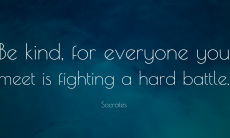- 90% of marketers say social media is important to their businesses.
- 68% analyze their social media activities.
- Only 41% are able to measure their social activities. (Social Media Examiner)
The numbers indicate almost all businesses now rely on social media for marketing, but less than half can measure if it’s working.
Social media monitoring is the act of using a tool to listen and measure what is being said about a business or key topic on the internet. This means monitoring media not just from traditional publishers, but on the great majority of social sites too. Many providers have created tools to facilitate analysis of social media channels.
But before you pick a tool to analyze, shouldn’t you decide what’s most important to measure?
Here are 12 inspiring social media monitoring case studies.
- ARBY’S: Noticed comments through social media about meats other than roast beef. This valuable feedback came from their own customers when they launched their “Meat Mountain” campaign poster showing all different meats other than roast beef. Their customers mistakenly thought it was a new sandwich, and through social media, indicated they were anxious to try it. Thus the birth of Arby’s new $10 Meat Mountain sandwich.
- BARCLAY: Launched a mobile banking application called PingIt. In the days following the launch, Barclays made significant changes to the app as a result of real-time social media analysis. Sentiment Analysis revealed a small proportion of mentions were negative. It was quickly apparent that many users were unhappy that the app didn’t work for under 18’s. It wasn’t only teenagers that were unhappy, but also parents that couldn’t transfer money to them. This could easily create a PR disaster, but the data allowed Barclays to act quickly. Within the week, 16 and 17 year-olds were given access to the app, showing the business value of quick responsiveness to customer feedback.
- CISCO: Tracked ongoing topics, trends, and sentiment to support short-term listening goals such as a launching a new business initiative. Some examples are its sponsorship of the summer Olympics, or its annual trade show, Cisco Live. They got closer to our customers and focused on how to monitor, respond, and triage conversations. Cisco reported they achieved 281% ROI through social listening.
- DELL: Had a online community called Idea Storm. This was a community in which Dell invited customers to come and share ideas about product improvements that they want. To date, there have been close to 550 different ideas from this community that have been implemented in Dell products.
- GATORADE: Launched Mission Control, where they monitor social media posts 24 hours a day. It has improved their marketing. The company extended an “Evolve” 60-second ad tune into a full-length track available for download in response to frequent questions like “Who sings that song?” Gatorade also used Mission Control to bulk up production of its recovery drinks because of complaints it was selling out.
- H&M: Ran four major campaigns that each featured difference celebrity spokespeople. By measuring the volume of conversation following the campaigns, H&M found that the success of their endorsements depended on their geographical markets. It showed how different cultures and customs can affect how an audience receives your marketing campaigns, and how markets with limited engagement may benefit from a different approach.
- HP: Decided to turn directly to their customers to ask what how they wanted to be “fed.” HP customers were most concerned with the steady cadence of posts. They clearly stated that they didn’t want or need to hear from them every day. Rather, they wanted their content all at once, condensed and concise. HP created their own online magazine, Hpmatters.com, where customers could turn to once a month to get their dose of content.
- KMART: Measured online reactions from an ad released across different channels at different time periods. By comparing social media reactions (via sentiment and volume) across various networks, Kmart was able to determine the effectiveness of an advertisement online, on television, and the reaction after a follow-up advertisement.
- MONEYGRAM: A leading money transfer company, wanted to globally evaluate at a glance where the conversations about their industry, products, and competitors were happening online. By monitoring the share of voice in the past month alongside the past week, analysts at MoneyGram are able to spot whether something has happened to shift the share trend and act accordingly. When MoneyGram launched their ‘Max’s World Adventures’ campaign – a fun, character-driven campaign aimed at children – they noticed a clear leap in their share of voice in that week, in comparison to their usual ‘normal’ share trend. They were then able to dive deeper into the data to see what exactly people thought of it was even more useful.
- NESTLE PURINA: Monitored Feed the Cattitude, an integrated campaign involving television spots, a landing page, a mobile app, and a Facebook page. Purina hoped to tap into conversation trends on the Feed the Cattitude Facebook page and on other social media venues. They monitored topics that generated the most conversation, engagement, and sentiment to ensure the tone stayed positive. Feed the Catittude rose to the top five most-engaged Facebook pages, as measured by SocialBakers. Nestlé Purina increased the impact of its paid search investment by aligning search terms with customer interest.
- PIZZA HUT: Used social media monitoring to make their marketing more effective. They posted several pieces of organic content, then tracked the conversation around it. That which got the most buzz is used more widely. Two very similar-looking posts, both shots of pizza, one was on a white background, the other on black. Because Pizza Hut was paying attention to the conversation, they saw that the black background shot was performing three times as well. This boosted the ROI of their ads by using that image.
- TV LAND: Listened to their own customers and decided to try posts of lyrics to TV theme songs or popular songs from the show era. The results were incredibly positive. For Pinterest, they created images with quotes from the scripts of their shows and saw improved engagement. TV Land learned through trial and error what their customers wanted to see that triggered their social engagement.
Do these case studies convince you of the value of social media monitoring? Would the right partner for social media monitoring help you?






